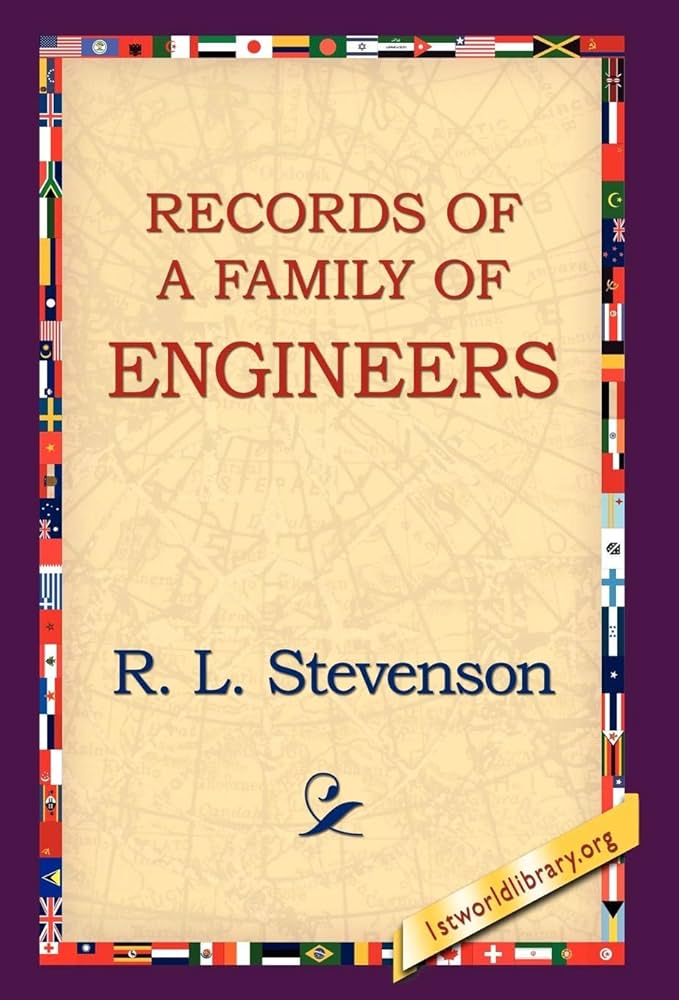Chapter III — Records of a family of engineers
byChapter III examines the mindset and enduring contributions of Robert Stevenson, whose work transcended routine engineering to embrace a thoughtful relationship with the forces of nature. He did not simply build structures; he anticipated nature’s resistance and responded with innovations grounded in observation and precision. One such invention, the Balance Crane, exemplified his intent to engineer with both mechanical insight and environmental sensitivity. His efforts were not driven by theory alone but by years of field experience, where measurements, tides, wind patterns, and rock formations were carefully recorded. Stevenson believed in aligning engineering with nature’s patterns, making it clear that durability and safety required understanding more than materials—it required listening to the environment itself. His cranes, harbors, and bridges stood not just because they were technically sound, but because they had been conceived with the terrain and weather in mind.
What sets Stevenson apart is his unwavering commitment to observation. Every detail of natural behavior was studied, from the motion of waves to the seasonal shifts in river currents. He considered measurement the heart of civil engineering, but never lost sight of the subtle instincts that years of exposure granted. While modern tools now perform calculations once made by hand, Stevenson relied on a deeper connection to nature, one not entirely explainable in numbers. His philosophy blended intuition with data, forming a practice that valued precision but respected unpredictability. This balance between science and instinct formed the bedrock of his success. His writings, though extensive, reveal how he struggled to capture these instinctive learnings—how difficult it is to teach someone how to “feel” the rock under their boots or “read” the ocean’s warning.
Stevenson’s detailed logs of tides, weather, and terrain changes evolved into an unofficial field guide. This compilation became a lifelong project, one where nature was both subject and collaborator. While his dream of documenting every observable pattern may have been too vast for full realization, the attempt alone showed the breadth of his ambition. His field journals were not just scientific—they were personal reflections shaped by years on wind-swept coasts and remote reefs. Each entry served a dual purpose: to inform future engineers and to remind himself that nature’s behavior, though often repeating, could never be assumed. Stevenson did not build against nature; he learned to build with it.
Despite the technical brilliance of his projects, Stevenson believed that every solid structure begins in the mind of someone who listens to the natural world. The lighthouse on Bell Rock is one example where success was not measured in stone alone but in how the tower answered the sea’s roar. His belief in “sympathy with nature” was not poetic indulgence—it was the method through which he achieved structural longevity. He did not see engineers as detached problem solvers but as interpreters of natural order, called to act without disturbing balance. From adjusting harbor walls to rerouting rivers, each move was tested against environmental consequences. Stevenson’s strength was his ability to pair innovation with restraint—knowing when to act and when to wait.
A useful lesson from Stevenson’s approach is his patient mastery of his craft. He emphasized that true engineering knowledge is gathered over time, under different skies, and through varied challenges. Unlike today’s instantaneous solutions, his work demanded weeks of weathering the cold, months of observation, and years of trial before success. He often returned to earlier project sites, evaluating how materials aged and how nature responded. Such follow-through helped him refine future designs and demonstrated the ethical duty of engineers to monitor what they build. In a time without advanced modeling, the human senses played a vital role. Stevenson trusted his eyes, ears, and gut as much as his tools.
His commitment extended beyond the physical. He wrote down thoughts with the same care he used in setting stones, preserving not only technical data but philosophies on engineering. These writings, though sometimes fragmentary, speak to a broader understanding of what it means to be a steward of human progress. He viewed his profession as a bridge between safety and ambition—between what man wants to build and what nature will allow. In doing so, Stevenson left a model of engineering that combined discipline, imagination, and humility. His legacy survives not just in lighthouses and harbors, but in the mindset he cultivated: one where man meets nature not as conqueror, but as collaborator.

